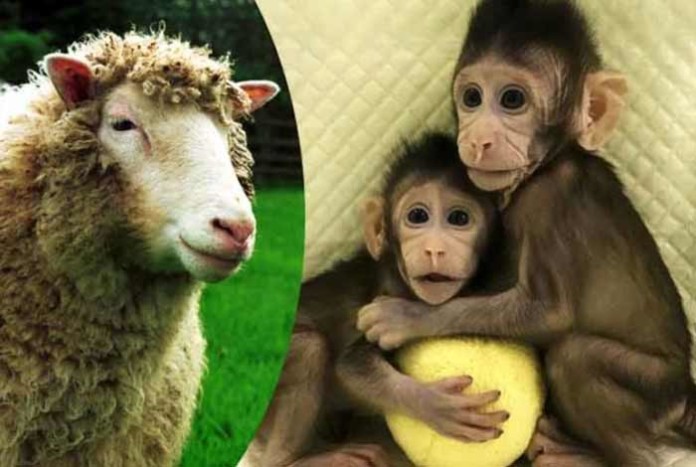
Scientists at Institute of Neuroscience, Chinese Academy of Sciences, Shanghai have cloned two monkeys by using the same techniques which was used to clone the sheep Dolly two decades ago. This research paved the way to clone humans next.
The cloning produced two identical, long tailed macaques known as Hua Hua and Zhong Zhong, in late 2017. These cloned monkeys are the first primates to be cloned in the order of mammals which includes monkeys, apes and eventually humans that are cloned significantly from a non-embryonic cell.
The cloning was achieved by implementing a procedure known as somatic cell nuclear transfer (SCNT). The technique SCNT involves transferring the nucleus of a cell to an egg which has its nucleus already removed, thereby allowing the DNA of transferred nucleus to enter the host egg. Researchers said their work would be very important development in the medical research by making it easier to study diseases among genetically uniform monkey population.
Muming Poo, supervisor of the research, said that recent cloning of monkeys has opened new doors for cloning humans as well. The idea is to produce animal models that are beneficial for research in promoting human health and medicine. Genetically identical animals are important in research because it, somehow, reduces the uniqueness owing to the genetic variations in non-cloned animals, which possibly can complicate experiments and also influence results. These cloned animals could be used to test recently developed drugs for various diseases before clinical use.
The two monkeys, Hua Hua and Zhong Zhong are growing like any other normal monkeys and are fed using bottles. The researchers are expecting more of these cloned macaques to be born in the coming months. Dolly was born in 1996 in Scotland, being the first successful mammal clone in the world. Since cloning of Dolly, scientists all over the world have successfully used SCNT to clone around 20 other species, including dogs, cows, rabbits, pigs, and rats. However, cloning of primates always failed through SCNT procedure.
The research was recently published in the journal Cell and it clearly states how Chinese team succeeded in cloning the monkeys, after using gene modulators to switch on and off various genes involved in inhibiting embryo’s growth. The success rate was also relatively low, and the Chinese team could possibly clone by transferring nuclei from a foetal cell unlike the adult ones, which was the case while cloning Dolly. It took around 127 eggs to clone just two monkeys.
A cloning expert, Robin Lovell-Badge from the Francis Crick Institute, London, who was not part of the Chinese research, regards the research as hazardous and inefficient.
The research highlights China’s important role at providing breakthroughs in biosciences, where its scientists have also crossed ethical boundaries. For example, around three years ago, researchers at Sun Yat-sen University, Guangzhou attempted to edit the human embryo’s DNA. Similar DNA editing of human embryo is now also being conducted in the U.S.
However, Scientists at the Chinese Academy of Sciences emphasized that they strictly followed international guidelines for animal cloning and research set by the National Institutes of Health (NIH). This research has initiated a world-wide debate on what is and what is not acceptable in cloning primates.




